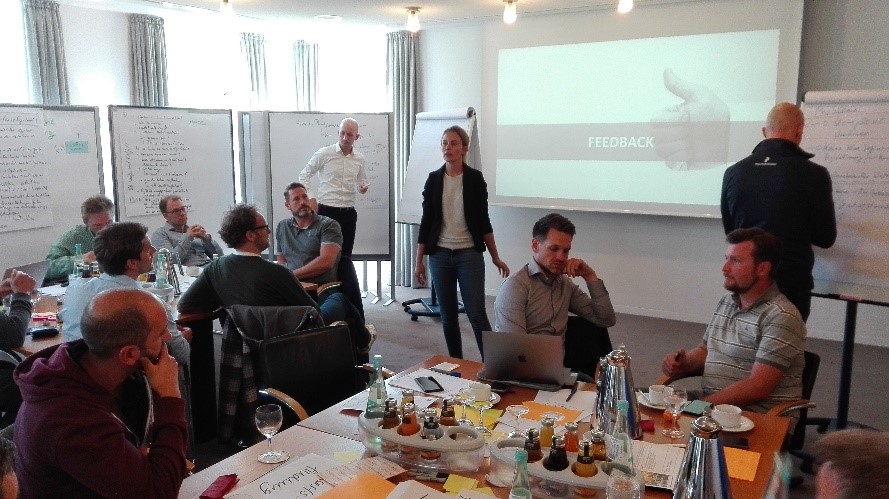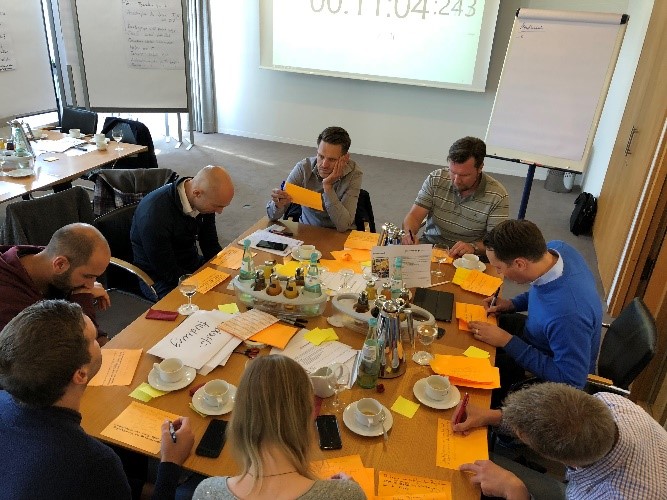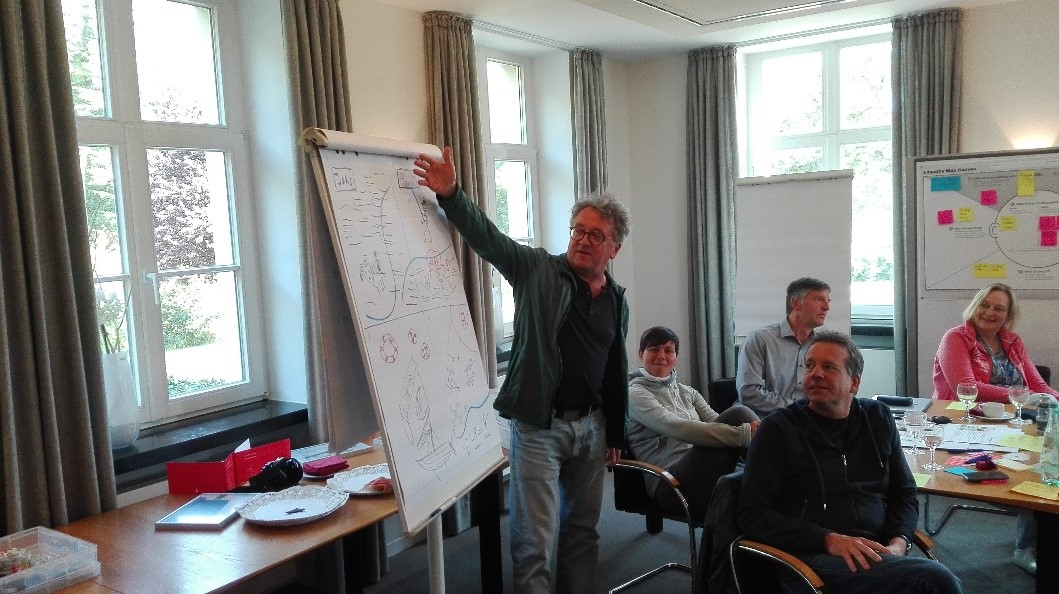14 September 2018 | Münster
On Friday, 14th September, a group of 25 managers from the IT management consultancy noventum came together to meet Neele Petzold, Alexander Schmidt and Patrick Schröder from the Science-to-Business team at Gut Havichhorst which is located close to Münster. The goal of the workshop was twofold. On the one hand, the Design Thinking sprint aimed at producing tangible results within a limited amount of time during the workshop. On the other hand, the workshop was designed to foster a creative atmosphere and to make the participants leave their comfort zones.
Introduction by the Museum of Disruption
Get the sprint started
Be creative
The first phase was the World café which is also known as brainstorming. As the topics given were very broad, the teams had to narrow it down and to decide where they would like to place the focus for the upcoming phases. After finishing the brainstorming, the teams were asked to present one or two ideas in a 30 seconds pitch. By voting with the hand the whole group could decide which of the ideas were to be pursued further by each team.
The following working stages Problem definition and re-definition as well as Need finding aimed at understanding the underlying problem of the chosen topic and to explore and find the needs from the perspective of the customer. Building on the gained insights, the teams started the Ideation in which they worked on different ideas. After structuring and clustering all found ideas, the best solution was chosen. In the subsequent phase, Prototyping, this idea was then further developed by creating a prototype.






